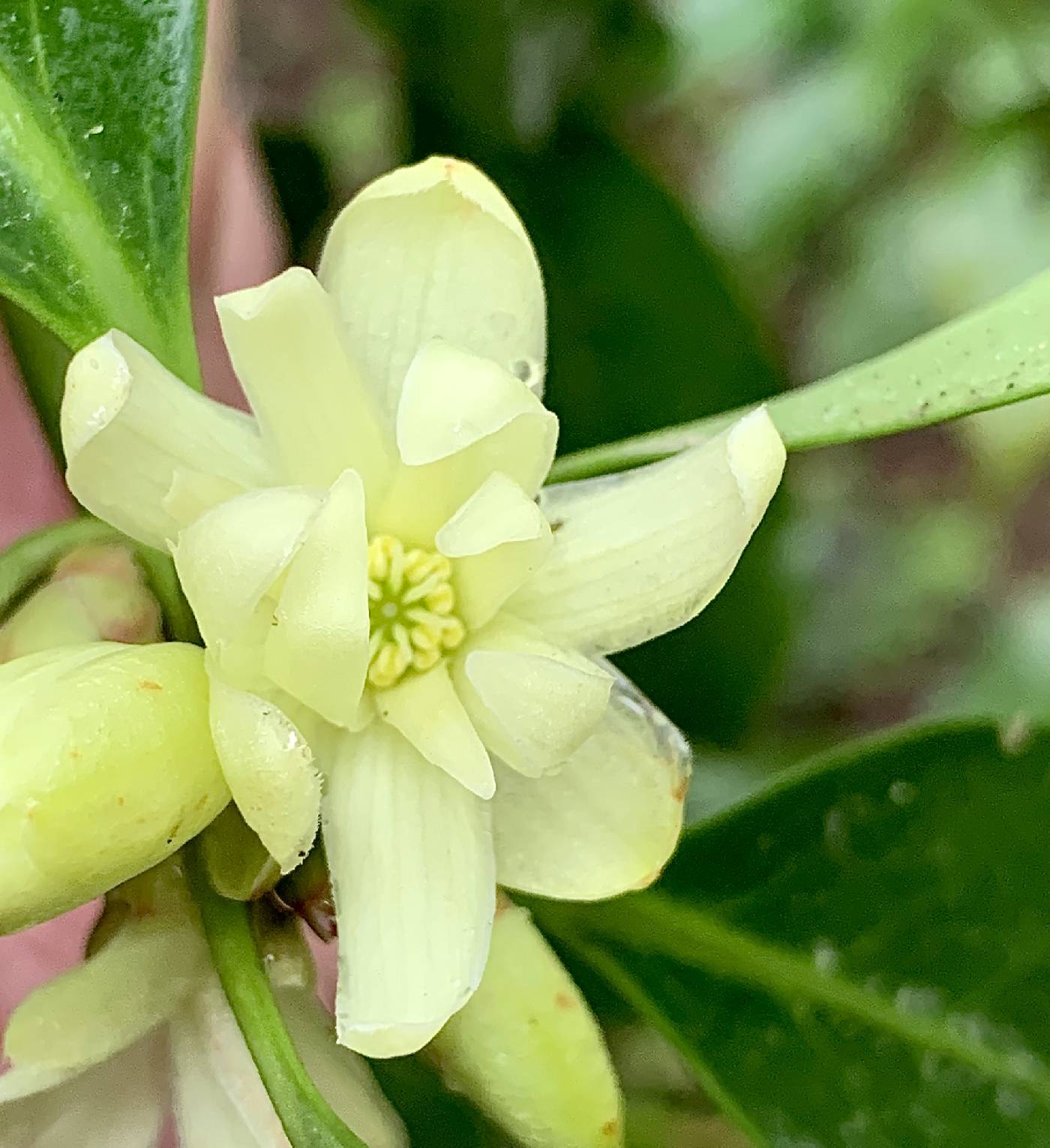Schisandraceae
|
Schisandraceae |
|
|
Shrubs , evergreen or deciduous, scandent or twining, glabrous. Leaves alternate, simple, without stipules, petiolate. Leaf blade often fragrant (especially when bruised or crushed), translucent-dotted, ovate to lanceolate, pinnately veined, thin to leathery, margins entire to remotely dentate. Flowers unisexual, staminate and pistillate on same [different] plants, axillary, solitary, pedunculate; peduncle bracteolate; perianth hypogynous; tepals 5-20, imbricate, distinct, in 2[-3] series, all similar but innermost more petaloid. Staminate flowers: stamens 4-80, hypogynous, distinct or connate partially or completely into fleshy, globose or discoid mass, in 1-several series; anthers basifixed, 4-locular, longitudinally dehiscent; pollen 3- or 6-aperturate; pistil absent. Pistillate flowers: pistils simple, 6-300, distinct, closely set in few to many series on globose to elongate axis, attached obliquely; placentation marginal to pendulous; ovules [1-]2-3[-10] per locule; stigmatic surface adaxial; stamens absent. Fruits aggregates of berries, produced on elongate axis. Seeds [1-]2-3[-10] per berry, flattened; endosperm copious, oily; embryo small. The Chinese drug wu-wei-zi and its substitutes are obtained from species of Schisandra . The drug is considered a potential source of expectorants, immune response boosters, and anti-ulcer compounds. Several lignan compounds from species of the genus are used as a treatment for hepatitis and as central nervous-system depressants (S. Foster 1989). Schisandraceae were considered closely allied to Illiciaceae by A. C. Smith (1947). Embryologic studies (R. N. Kapil and S. Jalan 1964) were interpreted as showing that the former are considerably removed from the latter. In his monograph, A. C. Smith also postulated a close relationship between Schisandraceae and Magnoliaceae. J. Hutchinson (1973) stated that Schisandraceae were probably derived from Magnoliaceae. Studies of fossil pollen led J. W. Walker and A. G. Walker (1984) to conclude that Schisandraceae and Illiceaceae are closely allied with Winteraceae. Based on analysis of nucleotide sequences from the plastid gene rbc L, however, M. W. Chase et al. (1993) and Qiu Y. L. et al. (1993) concluded that Schisandraceae and Illiciaceae are closely allied and closely related to Austrobaileyaceae but distant from Winteraceae.
|
|
